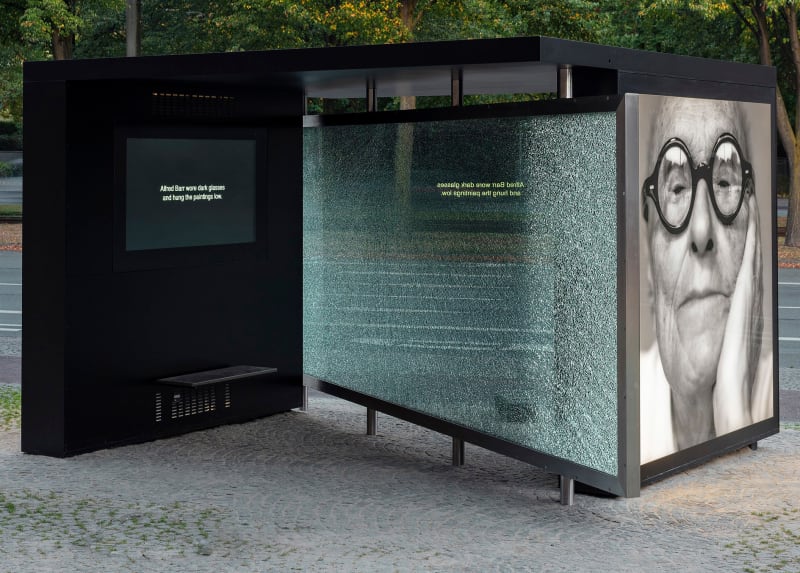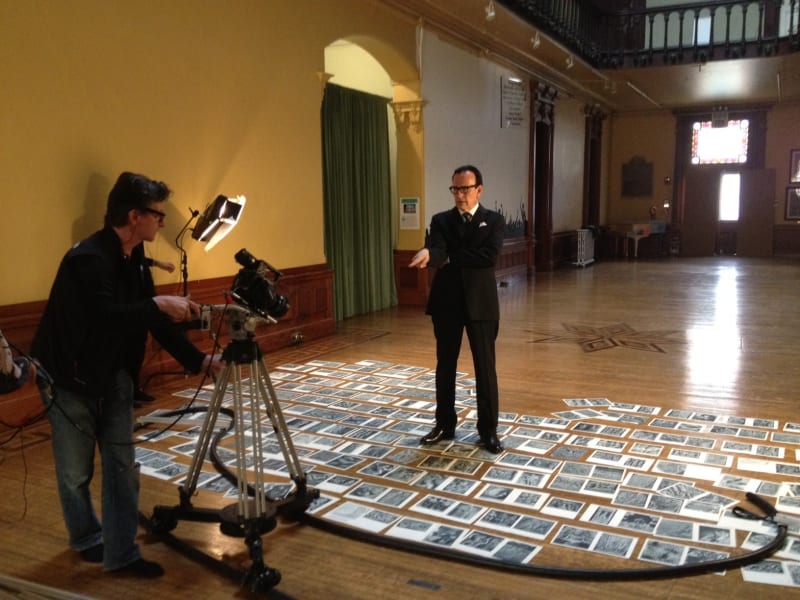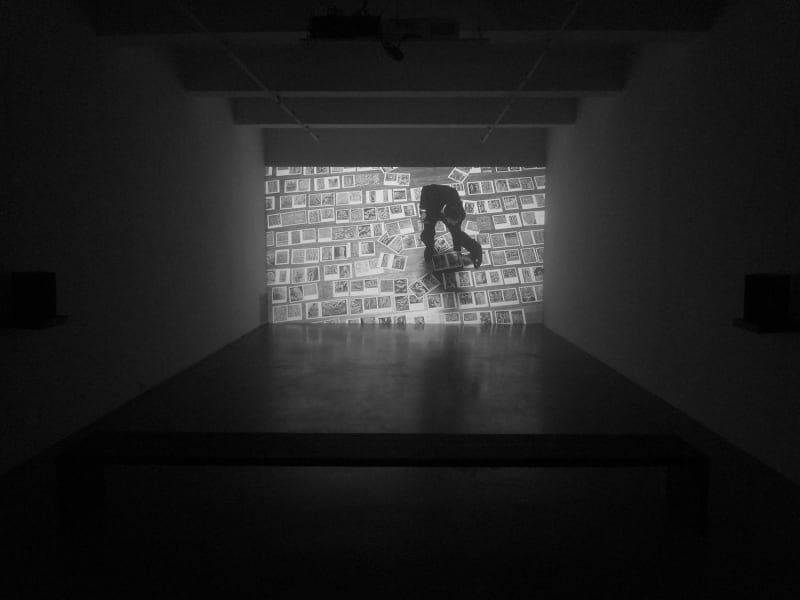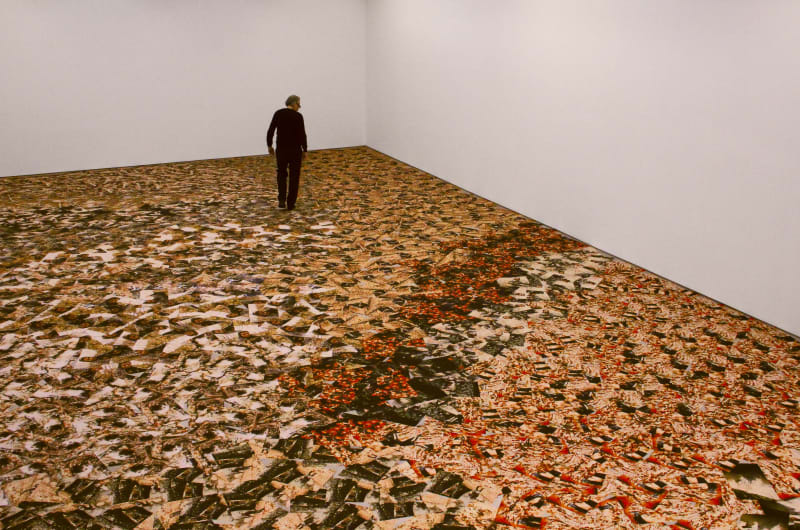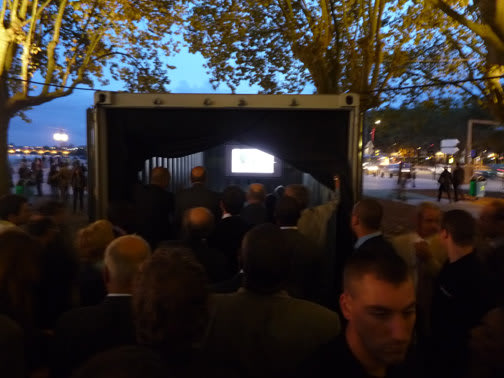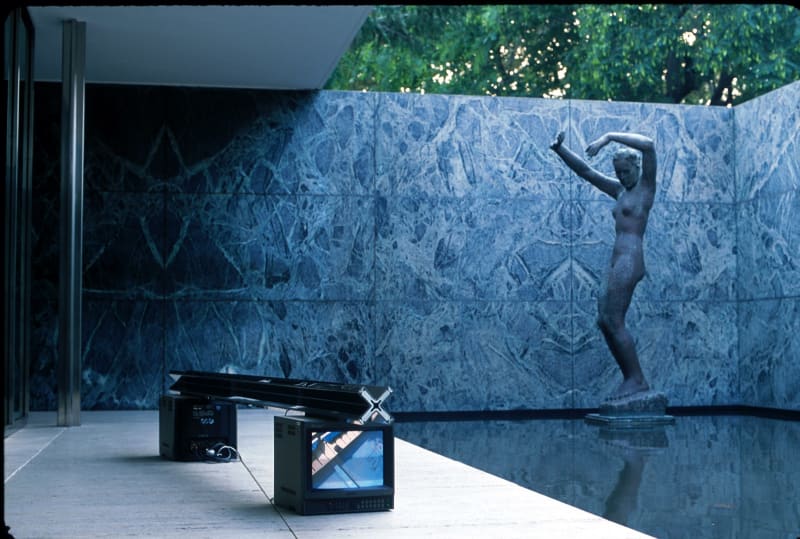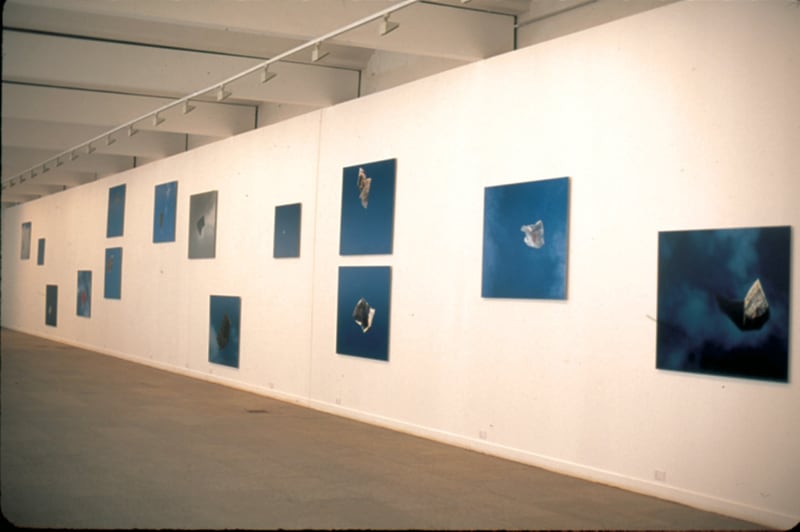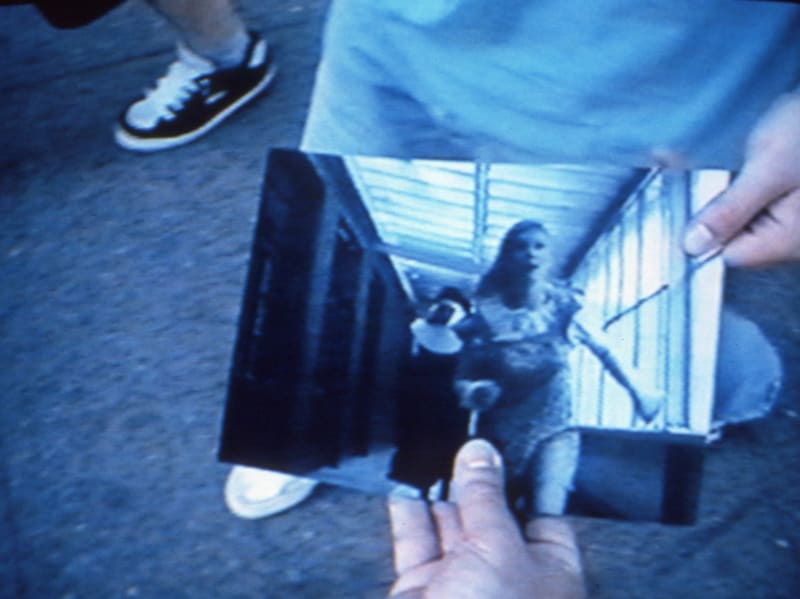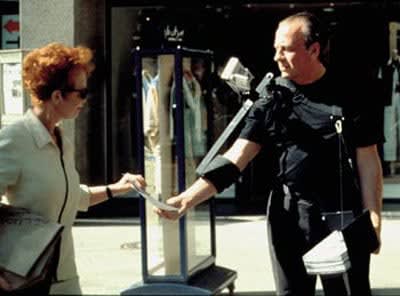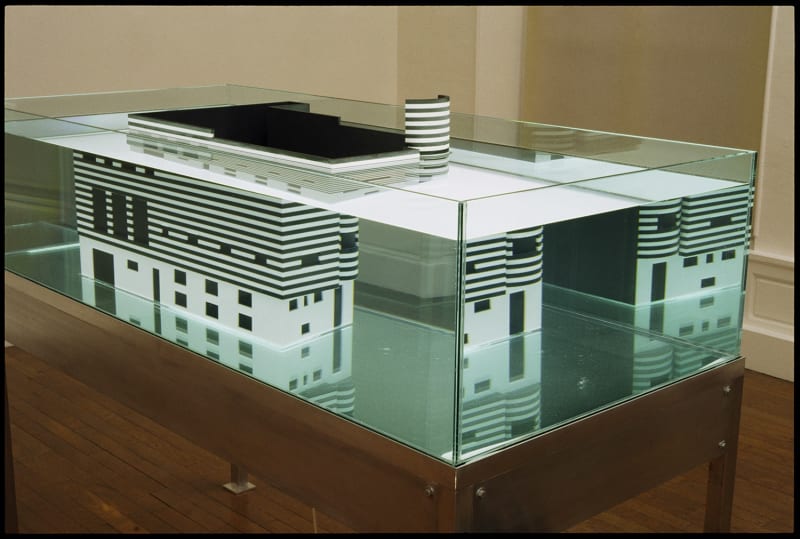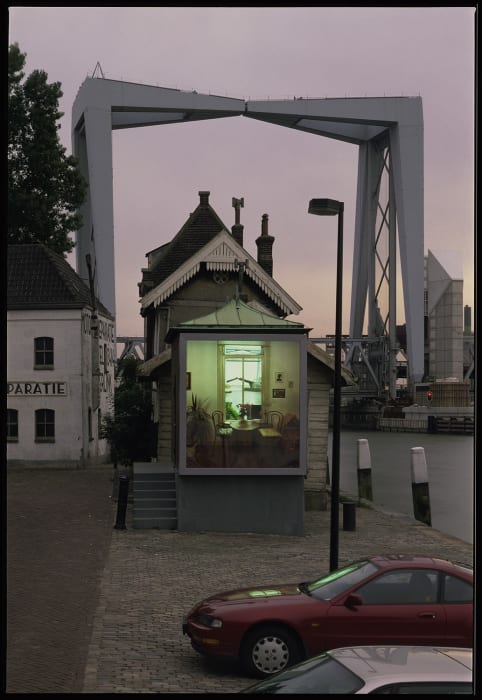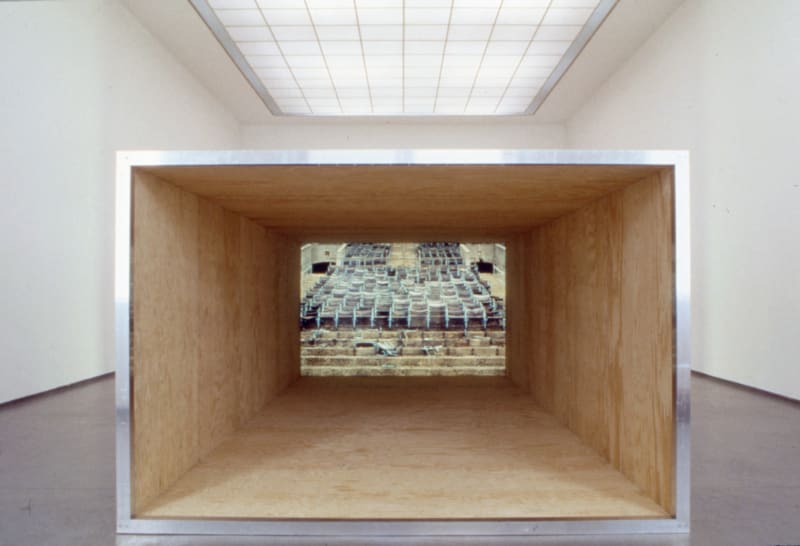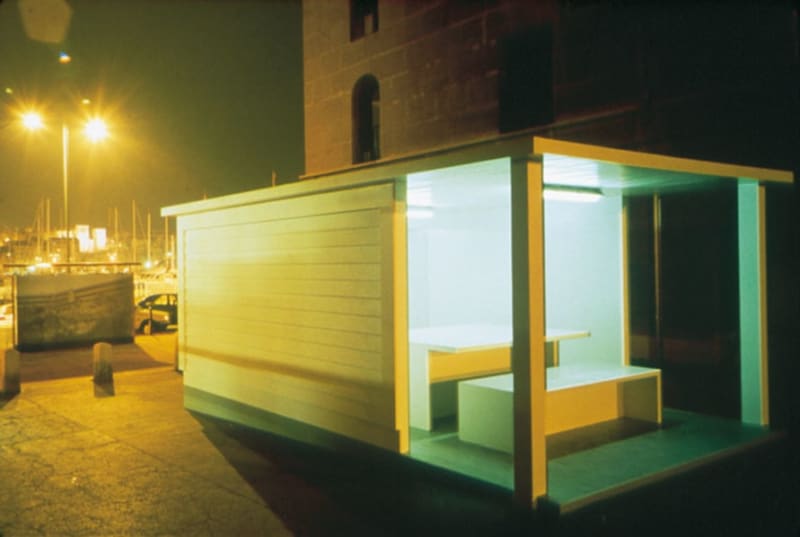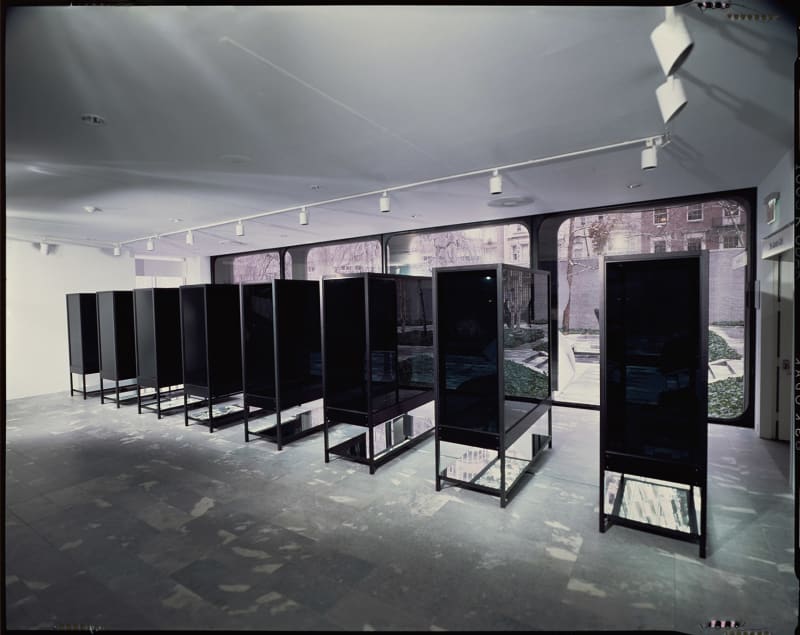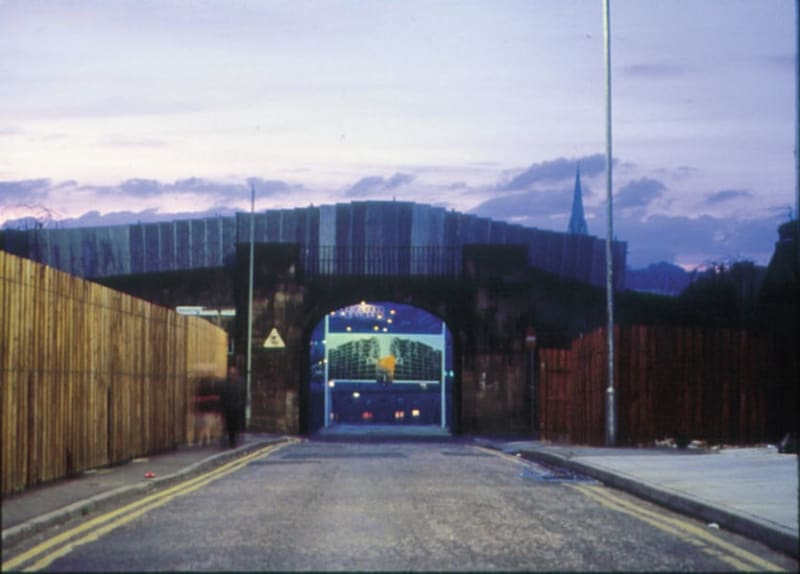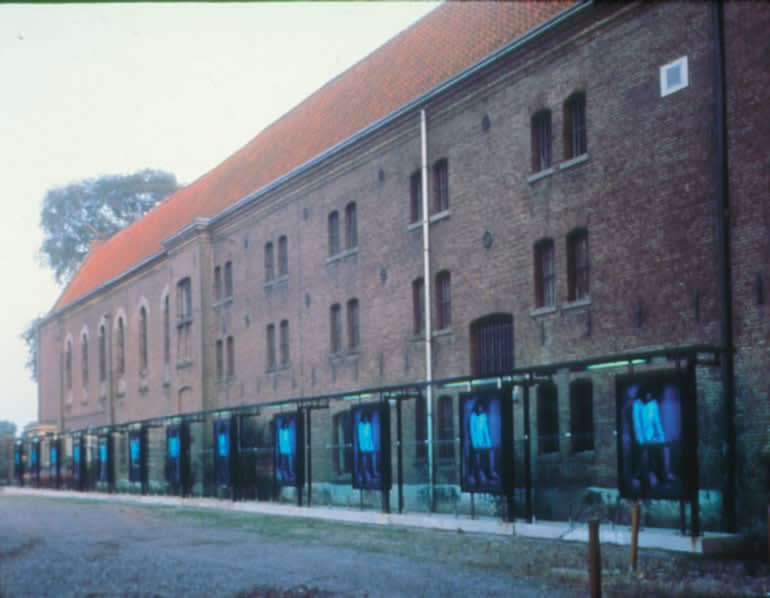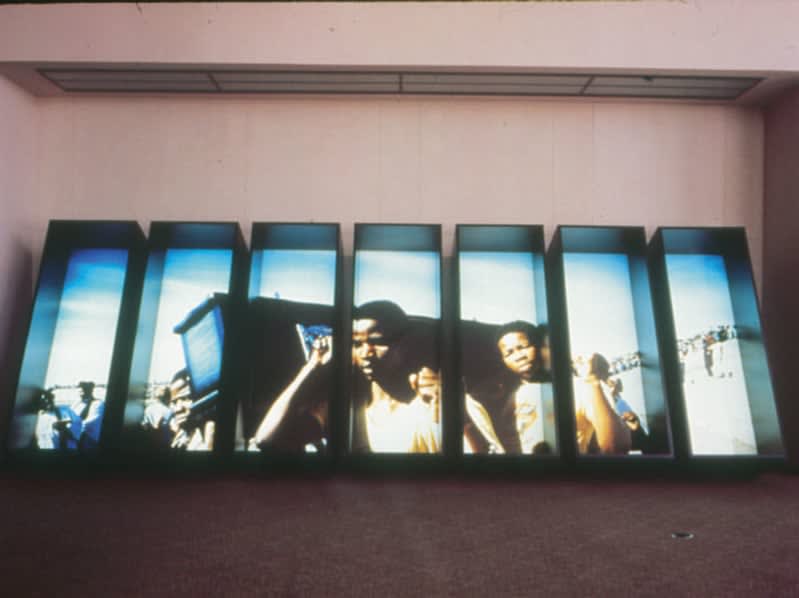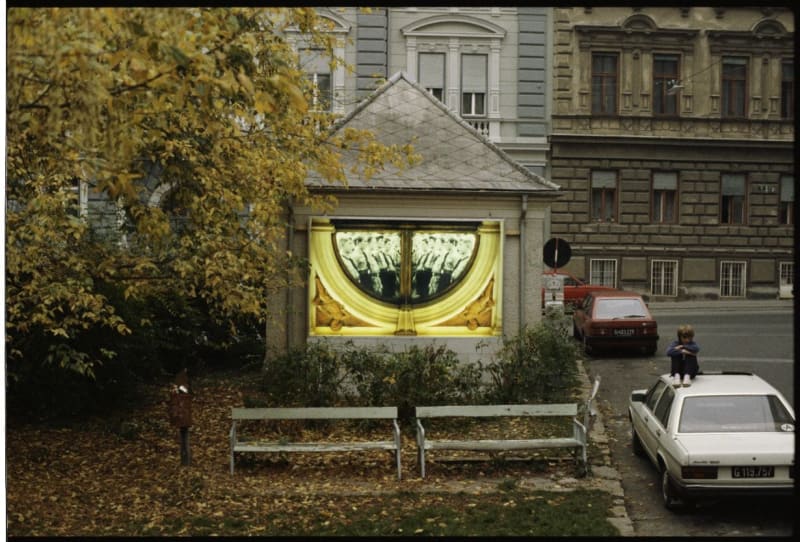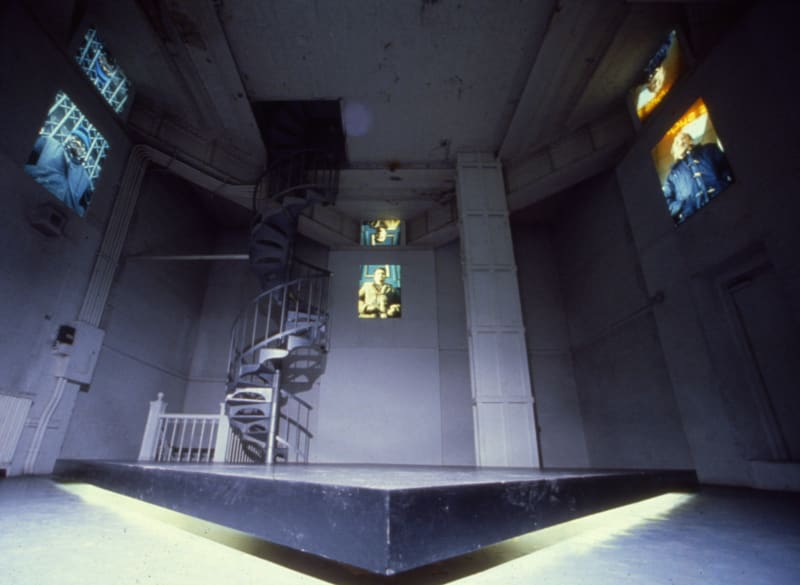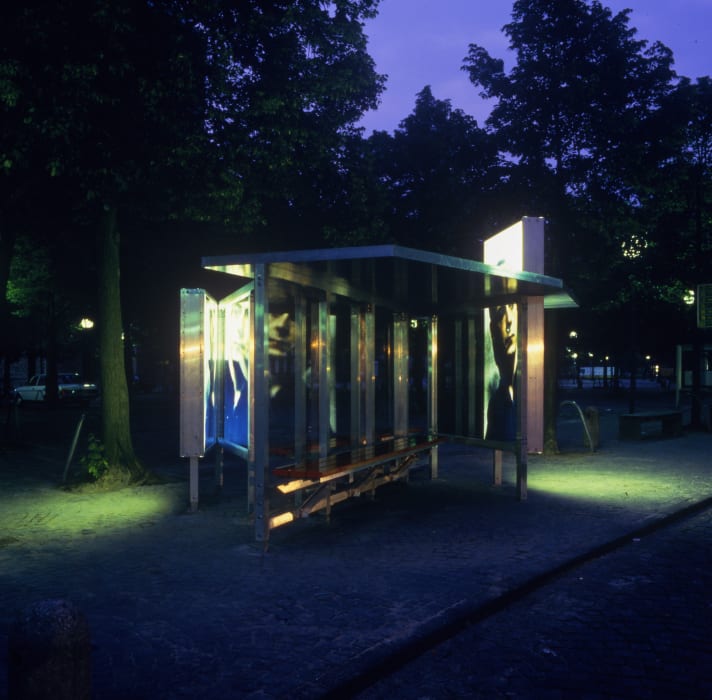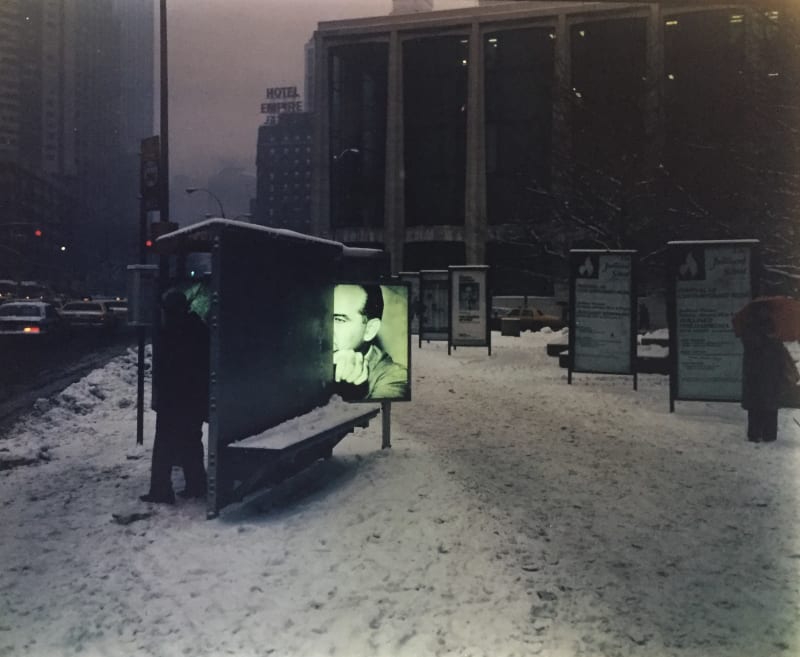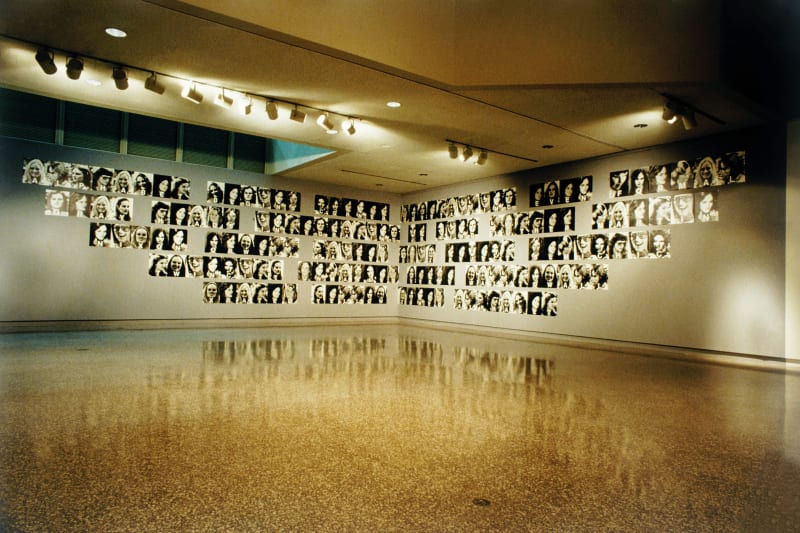"The true is not encrusted in the living persons and real objects you use. It is an air of truth that their images take on when you set them together in a certain order. Vice versa, the air of truth their images take on when you set them together in a certain order confers on these persons and objects a reality. "
Robert Bresson
Beginning in 1970 and continuing to the present, Adams has been a scribe keeping journals which note linguistic experiments, phrases that have struck Adams and appealed to him, quotations from books and magazines, notes for future work, dates to be remembered. He became absorbed in the philosophies of Guy Debord, Ezra Pound, Jean-Paul Sartre, Roland Barthes, Robert Bresson, Albert Camus, James Joyce and numerous others. As stated by Dennis
"I was always interested in language, but in the beginning I was somewhat intimidated until about age 20. You didn't come to being an artist out of philosophy".
By 2012, along with Adams' completion of his 42 minute video Malraux's Shoes, he was simultaneously referencing his own extensive library and archive documenting the intellectual climate of the 1960s. Entitled Tagging the Archive, this suite of 22 text pieces are montaged over revolutionary ephemera from the 60s as well as book covers such as Abbie Hoffman's Steal this Book (1971), Franz Erhard Walther's Objekte, benutzen (1968), Jean Luc Godard's Le Petit Soldat, Claude Levi Strauss's Tristes Tropiques, Henry Miller's Black Spring, and others. This was Adams' opportunity to formulate a critical dialogue filled with ambiguous clues. Juxtaposed against forerunners such as Broodthaer's Departement des Aigles (1968-72), or Aby Warburg's Mnemosyne Atlas (1866-1929), or Malraux's Le Musee Imaginaire, or Richard Prince's extensive personal library of vintage pulp fiction, Tagging the Archive forms a cryptic link to the underpinnings of Adams' oeuvre. The mere act of bringing together books and ephemera in the form of a personal library allowed issues to be raised, contiguities to be revealed and borders between disciplines to be transgressed
Dennis Adams’ work is situated between conceptual art, architectural installations, and public interventions. He critically engages with political narratives, urban landscapes, and historical memory. With a bold approach, his work often challenges conventional understandings of public space. Adams critiques media representation, nationalism, and the architectural structures of everyday life.
The Legacy of Dennis Adams: Political and Urban Narratives
Born in 1948, Dennis Adams works at the intersection of art, architecture, and activism. His practice emerged in the 1970s as site-specific engagement was rising. This identifies him as a forerunner of American fine art of the period. Rather than confining his work to traditional gallery spaces, Adams seizes urban environments. He uses the city as both subject and medium, having completed over fifty urban projects in cities throughout the United States and Europe. His works often respond to political and social crises, inviting public engagement.
Dennis Adams belongs to a generation of American artists such as Dan Graham, Lawrence Weiner, Jeff Wall and others whose careers were first supported and celebrated in Europe. With seventy-five solo exhibitions in museums and galleries around the world to his name, Adams is included in several public collections. His work has widely been recognized and awarded by international institutions. In addition to his artistic practice, Adams has taught at numerous prestigious institutions in the U.S. and in Europe.
Exploring Dennis Adams Art: Concept, Space and Intervention
Much of Dennis Adams’ work in the 1980s and 90s were public projects involving street architecture and institutional interventions. In 1989, a number of these were published as a collective body of work in the Kent Fine Art book entitled The Architecture of Amnesia. These international projects were presented together for the first time leading to a series of major exhibitions at international museums, including the Museum of Modern Art, New York. The Architecture of Amnesia addresses historical erasure and collective memory. Here, Adams explores how societies selectively remember and forget events. The project highlights the artist’s ongoing investigation into the mechanisms of historical narrative formation.
Another sequence of projects are categorized as his Bus Shelters. At the time, advertising was non-existant in these structures. Adams introduced content laiden duratrans photographs into the bus stop structures into critical art installations. These interventions disrupted the flow of his captive audiences. He thus encouraged passersby to reconsider the messages they unconsciously consume.
Adams’ series Airborne immediately post 9/11 employed photography and video to examine the skies over Manhattan. These were the media detritus hovering over the public below. How does the media influence public perception? These politically charged projects exemplify his commitment to dissecting contemporary socio-political realities. He often does so through an architectural and conceptual lens.
Moving beyond the issues of institutional critique by the end of the 1990s, Adams would focus on a series of performance-based videos including Outtake (1999), Takedown (2000), Seize (2001), Freeload (2004), Makedown (2005), Spill (2010) and Malraux’s Shoes (2012).
FAQs About Dennis Adams
Who is Dennis Adams and what defines his art?
Dennis Adams is a fine artist known for his public interventions and architectural installations. His work often critiques political discourse, city structures, and collective memory. Adams takes a conceptual approach to diverse media and materials. This includes photography, video, and sculpture. What they have in common is his challenge to perceptions of space and authority. His influence extends across American fine art. He continues to redefine the relationship between art and public spaces.
What themes and techniques does Dennis Adams explore in his work?
Dennis Adams’ art examines themes of urban intervention, political critique, and historical amnesia. He often employs mixed media, site-specific installations, and repurposed public structures. His aim is to engage viewers in conversations about power, memory, and space. As a key figure in American fine art, he challenges conventional artistic boundaries.
Where can I view or purchase Dennis Adams art?
Adams’ artworks have been exhibited in major museums, galleries, and public spaces worldwide. Enthusiasts can explore his archive through Kent Fine Art.
As you discover Adams’ work, don’t forget to explore our other Kent Fine Art artists, including Antoni Muntadas who explores similar themes.

